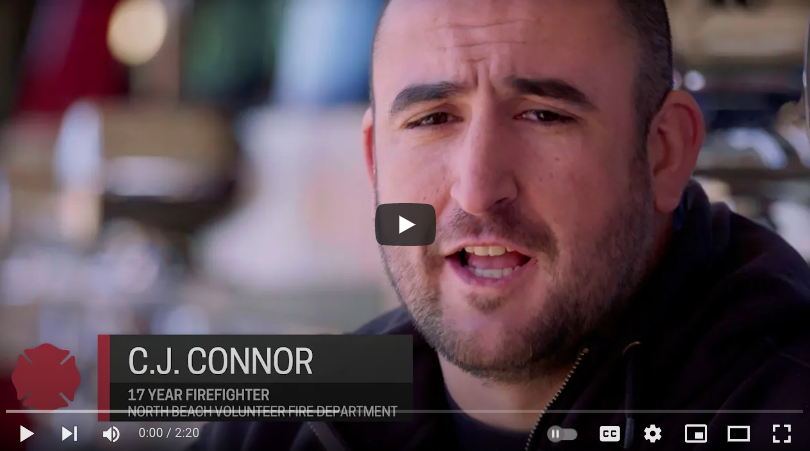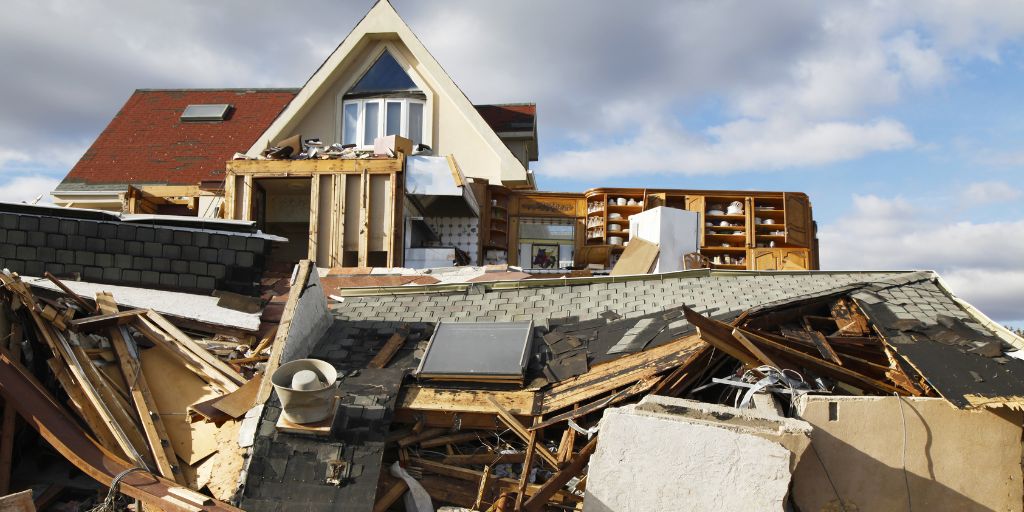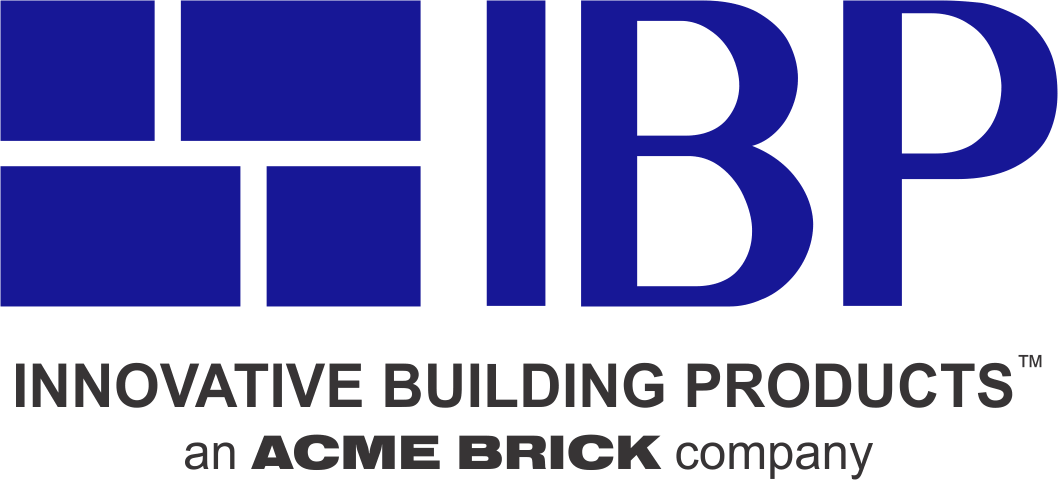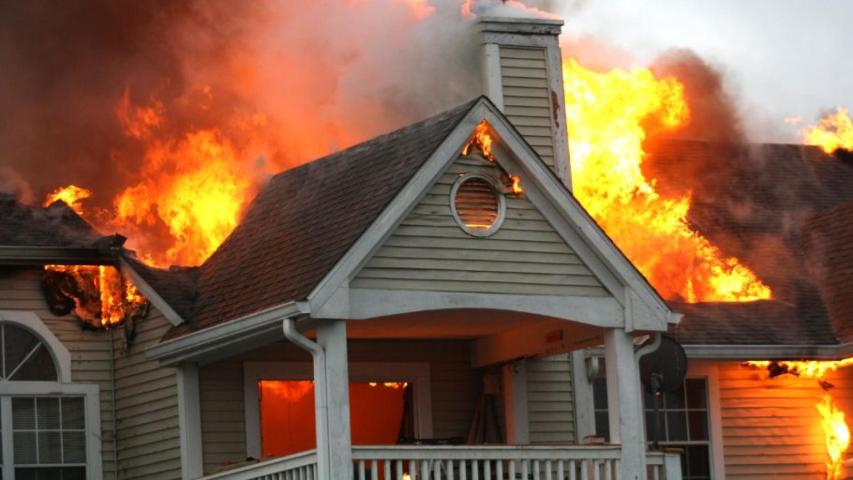Residential and commercial builders have first-hand experience with the durability, low maintenance, and safety of brick construction. Plus, the consensus among fire fighters is that a home or commercial building constructed of brick retards fire better than any other material. Even in the most destructive fires, the lives of residents and the people who must fight these fires can be saved, and the damage to the building can often be mitigated.
Property, and more importantly lives, can be saved when homes and businesses are constructed of brick. Clay brick has proven to be a “safety valve” for centuries. This two-minute video, featuring professional fire fighters, explains why.

In storm-prone areas, brick construction can also help stop damage from flying debris. Click here to see the strength of brick.
What Makes Brick Safer?
For more than 130 years, Acme Brick has manufactured a staple of home and commercial construction: clay brick. Because it has been around for centuries, the safety benefits of brick are often overlooked by architects and builders. It’s easy to take brick for granted. However, as this video suggests, this could be a tragic mistake.
Brick is a safer building material than others for a very simple reason. With its main component being clay, brick can withstand heat over 2,000 degrees Fahrenheit, depending on its composition and purpose. It's classified as a non-combustible material, meaning it can serve to both resist and contain fire.
According to this source, “No cladding (exterior) can take the heat like brick! There have been countless stories about fiber-cement and vinyl homes going up in flames so fast that firefighters are put in danger. On average, brick provides 1.5 hours of protection before a fire breaches a home, whereas vinyl and fiber-cement siding won't withstand 30 minutes. Clay brick helps to slow down the spread of the fire, which gives firefighters an extra hour to do their job safely and to save your family, your home, and your possessions.”
Fire Is Not the Only Hazard
Fairy tales and fables are replete with symbolism and life lessons. In the case of the classic story “The Three Little Pigs,” the big, bad wolf is an interesting metaphor for danger that might be lurking around the corner in home construction. Of course, the story also illustrates the benefits of good planning!

In this tale, one pig built a house of straw, while the second pig built his house with sticks. They built their houses very quickly and then sang and danced all day because they were lazy. The third little pig worked hard all day and built his house with brick.
Hmm.
You know where this story is going, and it’s not going to be pretty.
The big, bad wolf went to the first pig’s straw house, huffed and puffed, and blew this poorly made edifice back to Kansas. This little porker ran over to the other pig’s house, which was made of sticks, and the big, bad wolf began smirking as he did his usual huffing and puffing, then promptly blew down this house too! Of course, both pigs headed for the smart pig’s abode, and when the wolf was unable to blow down this home constructed of brick, the moral of the story was revealed. Brick construction is stronger and safer.
The other lesson involves the dangers to homes from natural disasters such as wind, rain, hail, tornadoes, or hurricanes. Mother Nature (and any big bad wolves) can wreak havoc on buildings that are not constructed to withstand them.
Fire is not the only force that can destroy homes and cause misery for the homeowners. Research shows that in September 2004, The Wind Science and Engineering Research Center at Texas Tech University conducted a study that demonstrated that brick homes offer a greater amount of protection from wind-blown debris than materials such as vinyl or fiber-cement siding.
Applying Florida’s building codes regarding high-velocity hurricane zones, tests found that brick houses surpassed the 36-mph impact resistance requirement. Brick is also more resistant to abrasion and weathering that can be caused by storms and high winds, plus coatings can flake off in heavy storms.
Safety With Less Maintenance
Natural clay brick is safer than other building materials, and it also has another practical advantage. Brick homes have traditionally held or increased their value over generations because they do not require the constant upkeep—painting, replacement of worn-out siding or wood, and other maintenance—that other building materials require.
In short, homes constructed of brick require less maintenance and that’s an important consideration for builders. It offers long-term value to homebuyers. As has been noted by many sources, brick does not show destruction or decay nearly as quickly as other materials, and if it does, the repairs typically cost less. With more and more families remaining in the same home for decades, brick is one way they can “future-proof” one of their most valuable assets. Potential maintenance is usually minimal, such as repointing mortar joints. Brick allows a home to age with few complications, and the design remains timeless.
Homes and commercial buildings are safer from fire and natural disasters than those constructed of other materials and require less maintenance. For more information, talk to the brick experts at Acme Brick.

